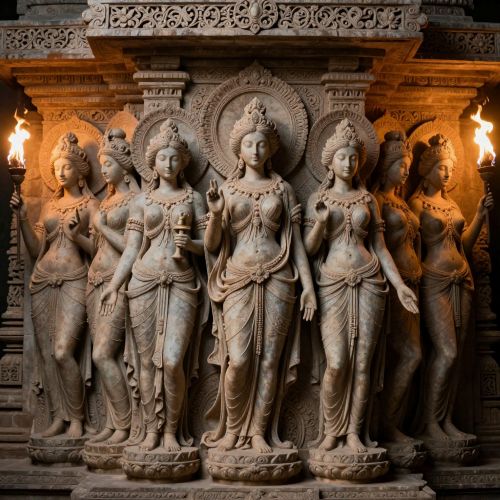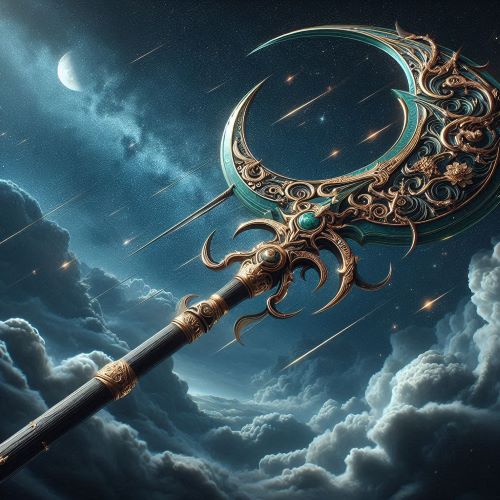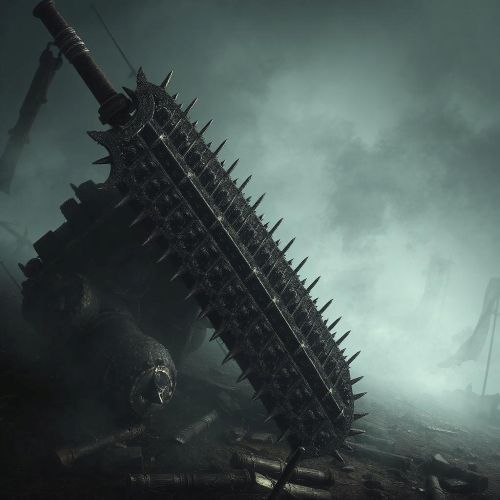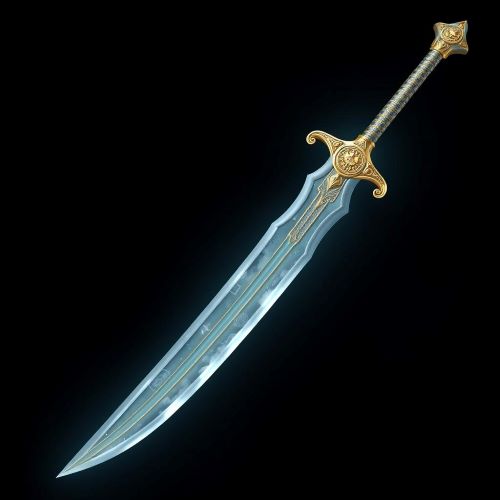Varunastra : The Fluid Weapon
Varunastra
Introduction
Indian mythology brims with epic tales, mystical beings, and divine weaponry that symbolize more than mere tools of war—they reflect cosmic forces and spiritual truths. Among these mythical weapons, Varunastra stands out as one of the most enigmatic and powerful. Named after the Vedic deity Varuna, this water-based weapon is revered for its unmatched ability to manipulate the element of water. From unleashing floods to countering fire-based attacks, the Varunastra represents nature’s duality—capable of both creation and destruction.
Origins
Varunastra finds its roots in the worship of Varuna, one of the oldest gods in the Vedic tradition. Varuna is the guardian of the cosmic order and the divine embodiment of the water element—ruling over oceans, rivers, rain, and the law of the universe. It’s no surprise that the weapon bearing his name would be one of immense elemental power.
According to ancient scriptures, Varuna didn’t simply forge the Varunastra as a weapon of brute force. Instead, it was seen as a gift to mortals who demonstrated inner purity, discipline, and devotion—a tool entrusted to those who could uphold dharma. Unlike earthly weapons, Varunastra was not crafted from metal or stone; it was said to be made from divine energy, capable of manifesting through sacred chants and spiritual focus.
Think you know your myths and legends? Dive into the world of ancient stories and test your knowledge with our engaging quizzes on Mythlok!
Powers
The Varunastra isn’t bound by form—it is fluid and formless, just like the element it embodies. When invoked through precise mantras and mental focus, it has the power to summon torrential rains, create floods, or unleash oceanic storms. These aren’t symbolic storms; they’re described in myth as real forces of nature capable of washing away entire armies.
Its effectiveness, however, isn’t merely in offense. The Varunastra plays a strategic role in ancient warfare by neutralizing fire-based weapons, such as the infamous Agneyastra. This elemental balance—fire versus water—is a recurring theme in Indian epics, and the Varunastra often stands as the ultimate counter to fiery threats. Notably, it also holds a cosmic vulnerability to the Visoshanastra, a weapon believed to evaporate water and dry up floods, reinforcing the delicate dance of balance among divine forces.
Owners/Users
Not everyone could wield the Varunastra. Its invocation required not just skill, but spiritual alignment. Those chosen to bear its power were often great warriors or avatars guided by righteousness and divine destiny.
In the Mahabharata, Arjuna—the celebrated archer—receives the Varunastra from Varuna himself. This event is particularly significant, as Arjuna is blessed with numerous divine weapons during his quest, and Varunastra adds to his reputation as a warrior favored by the gods. His brother-in-arms, Satyaki, is another known wielder who used the weapon during the Kurukshetra War.
In the Ramayana, the divine brothers Rama and Lakshmana are said to have used the Varunastra in their fierce battles against the demon king Ravana’s forces. Even Hanuman, the monkey god known for his unmatched devotion and strength, is believed to have wielded it during his journey to aid Rama.
Interestingly, the Varunastra wasn’t reserved solely for the forces of good. Texts also hint that Meghanada (Indrajit), the son of Ravana, and even Ravana himself may have had access to this celestial weapon—emphasizing that divine power, in mythology, could be both a boon and a test depending on the wielder’s intentions.
Instances used
The Varunastra’s presence in mythological warfare isn’t just for show—it often shifts the tide of battle. In the Mahabharata, it makes several appearances, especially during intense face-offs between legendary warriors. One of the most striking uses occurs when Satyaki counters Drona’s fiery Agneyastra with the Varunastra, preventing mass destruction. Another memorable moment involves Arjuna using it during his training with Drona, showcasing how mastering such a weapon was considered an essential milestone for any divine warrior.
In the Ramayana, Rama’s strategic deployment of the Varunastra helps extinguish Ravana’s fire-based attacks and clears the way for victory. It’s moments like these that elevate the Varunastra beyond just another weapon—it becomes a symbol of divine will, discipline, and the elemental balance of nature.
Frequently Asked Questions
Lorem ipsum dolor sit amet, consectetur adipiscing?
Lorem ipsum dolor sit amet, consectetur adipiscing elit. Praesent convallis vestibulum justo, ac tincidunt nunc vehicula quis. Nullam id dolor quis orci malesuada feugiat. Curabitur aliquet libero at urna ullamcorper, ac ultricies nulla dapibus.
Lorem ipsum dolor sit amet, consectetur adipiscing?
Lorem ipsum dolor sit amet, consectetur adipiscing elit. Praesent convallis vestibulum justo, ac tincidunt nunc vehicula quis. Nullam id dolor quis orci malesuada feugiat. Curabitur aliquet libero at urna ullamcorper, ac ultricies nulla dapibus.
Lorem ipsum dolor sit amet, consectetur adipiscing?
Lorem ipsum dolor sit amet, consectetur adipiscing elit. Praesent convallis vestibulum justo, ac tincidunt nunc vehicula quis. Nullam id dolor quis orci malesuada feugiat. Curabitur aliquet libero at urna ullamcorper, ac ultricies nulla dapibus.
Lorem ipsum dolor sit amet, consectetur adipiscing?
Lorem ipsum dolor sit amet, consectetur adipiscing elit. Praesent convallis vestibulum justo, ac tincidunt nunc vehicula quis. Nullam id dolor quis orci malesuada feugiat. Curabitur aliquet libero at urna ullamcorper, ac ultricies nulla dapibus.
Lorem ipsum dolor sit amet, consectetur adipiscing?
Lorem ipsum dolor sit amet, consectetur adipiscing elit. Praesent convallis vestibulum justo, ac tincidunt nunc vehicula quis. Nullam id dolor quis orci malesuada feugiat. Curabitur aliquet libero at urna ullamcorper, ac ultricies nulla dapibus.
Watch
Source
Contributors to Wikimedia projects. (n.d.). Varunastra – Wikipedia. https://en.wikipedia.org/wiki/Varunastra
About: Varunastra – DBpedia. (n.d.). https://dbpedia.org/page/Varunastra
Varunastra | The Demonic Paradise Wiki – Fandom. (n.d.). https://the-demonic-paradise.fandom.com/wiki/Varunastra
Varunastra: Significance and symbolism. (2024). https://www.wisdomlib.org/concept/varunastra
Dr. Vineet Aggarwal. (2015). War of the Worlds – Decode Hindu Mythology. http://decodehindumythology.blogspot.com/2015/04/war-of-worlds_11.html








